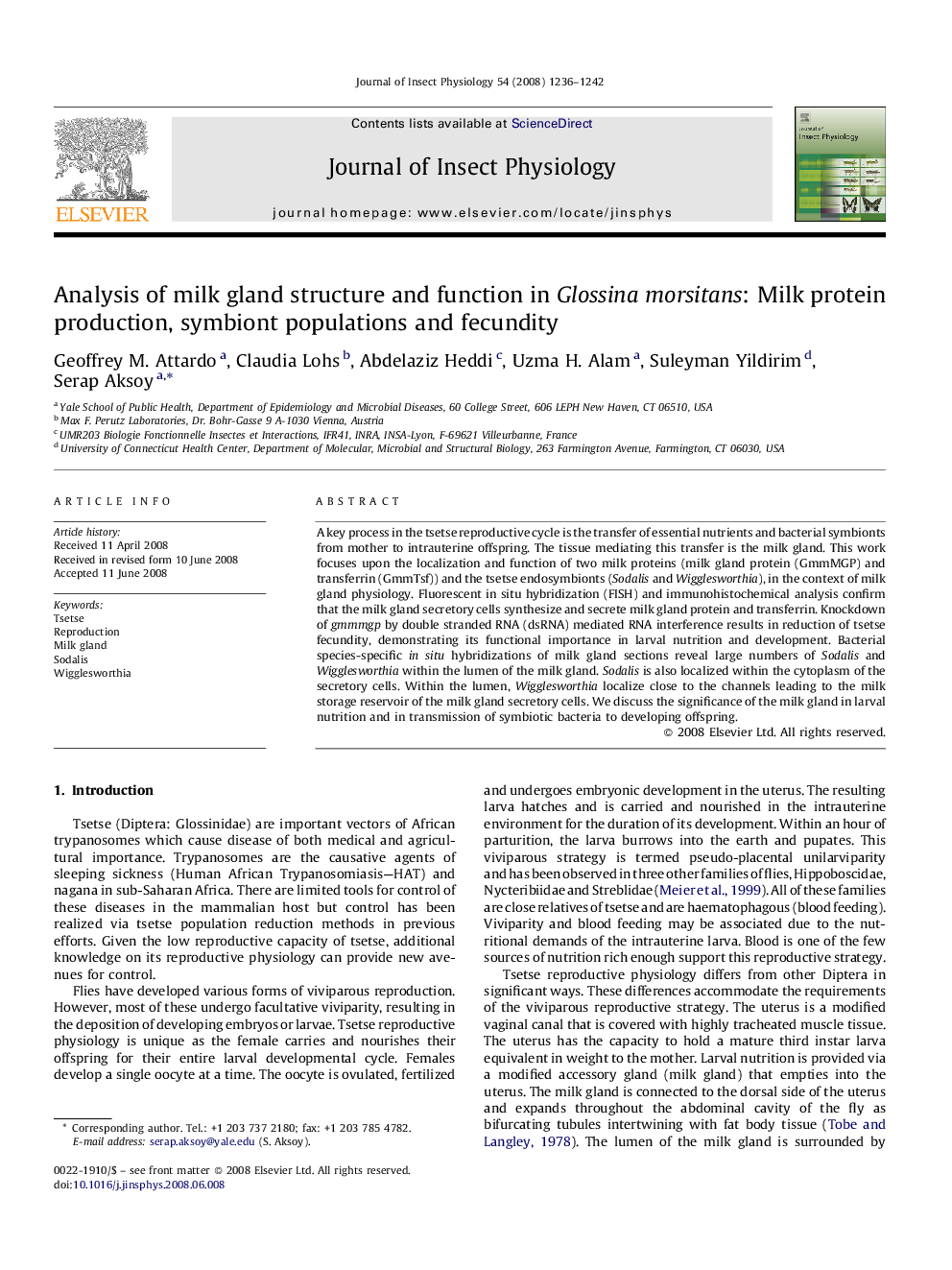| کد مقاله | کد نشریه | سال انتشار | مقاله انگلیسی | نسخه تمام متن |
|---|---|---|---|---|
| 2841196 | 1165383 | 2008 | 7 صفحه PDF | دانلود رایگان |

A key process in the tsetse reproductive cycle is the transfer of essential nutrients and bacterial symbionts from mother to intrauterine offspring. The tissue mediating this transfer is the milk gland. This work focuses upon the localization and function of two milk proteins (milk gland protein (GmmMGP) and transferrin (GmmTsf)) and the tsetse endosymbionts (Sodalis and Wigglesworthia), in the context of milk gland physiology. Fluorescent in situ hybridization (FISH) and immunohistochemical analysis confirm that the milk gland secretory cells synthesize and secrete milk gland protein and transferrin. Knockdown of gmmmgp by double stranded RNA (dsRNA) mediated RNA interference results in reduction of tsetse fecundity, demonstrating its functional importance in larval nutrition and development. Bacterial species-specific in situ hybridizations of milk gland sections reveal large numbers of Sodalis and Wigglesworthia within the lumen of the milk gland. Sodalis is also localized within the cytoplasm of the secretory cells. Within the lumen, Wigglesworthia localize close to the channels leading to the milk storage reservoir of the milk gland secretory cells. We discuss the significance of the milk gland in larval nutrition and in transmission of symbiotic bacteria to developing offspring.
Journal: Journal of Insect Physiology - Volume 54, Issue 8, August 2008, Pages 1236–1242